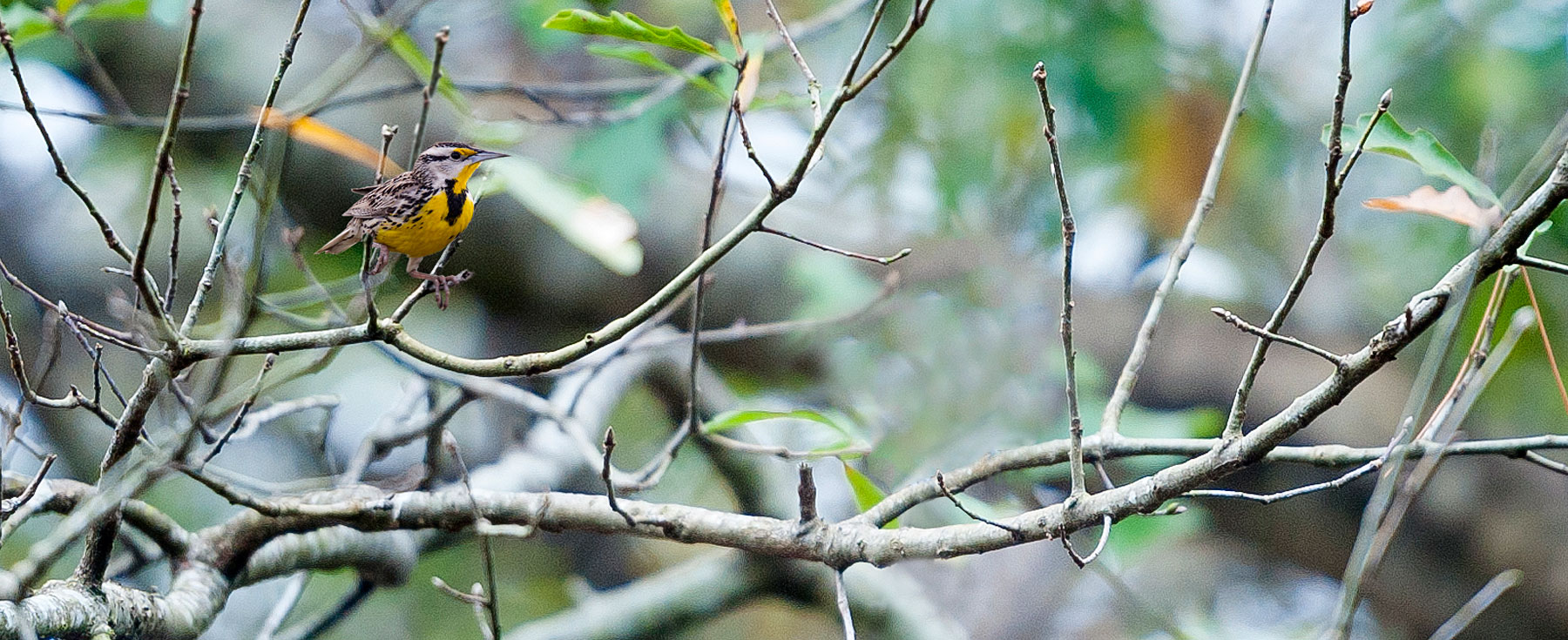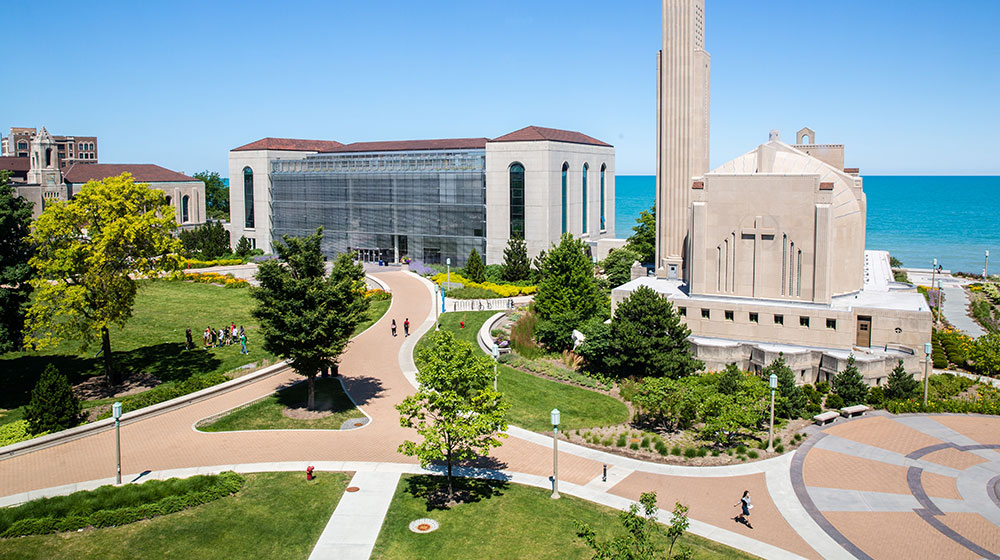Stormwater Management
A leader in water conservation
Located on Lake Michigan, Loyola is dedicated to smart water management and protecting the region’s most precious resource. The University’s Lake Shore Campus, in fact, has been recognized for its sustainable landscaping and facilities.
By the numbers


19 MILLION gallons of rainwater that Loyola diverts annually from Chicago’s sewers.
55,000 square feet of green roofs at Loyola, the most of any college in the Midwest.
91 GEOTHERMAL WELLS heat and cool the University’s School of Environmental Sustainability.
7 CAMPUS CISTERNS capture and release rainwater into the ground or treat it to be reused elsewhere.
Making the rain go away
Severe downpours have become more common in recent years. All that extra rainfall is leading to more flooded basements and forcing sewage into the Chicago River and Lake Michigan. Here’s what Loyola is doing to address the issue.

Rather than waste rainwater by letting it drain into sewers, Loyola uses permeable pavers and cisterns to collect runoff and treat it for use around campus. (Roll over the above numbers to see how a sustainable stormwater system works.)
1. PERMEABLE PAVERS: These brick-like blocks allow rainwater to percolate directly into the soil to replenish groundwater.
2. POROUS SOIL: Loyola sits on porous soil—sand, essentially—which means most of the rain that falls on campus quickly flows into the ground and returns to Lake Michigan.
3. CISTERN: The roof on the Institute of Environmental Sustainability diverts rain into a 3,000-gallon cistern. After it’s collected, the water gets filtered before being reused to irrigate plants in the Ecodome—and to flush some toilets in the Institute.
4. STORAGE VAULT: Underground chambers collect rainwater from adjacent buildings and slow the amount of water that enters the city’s sewer system. This reduces basement flooding and prevents polluted water from going into Lake Michigan and the Chicago River.
WHAT YOU CAN DO: Learn more about permeable pavement and watch a video on how it is installed.

In the past five years, Loyola has tripled its green roof footprint. At 55,000 square feet, the University now has more green roofs than any other university or college in the Midwest.
- Seed mix
- Substrate
- Filter
- Drainage
- Protection mat
- Membrane
- Insulation
- Vapor control
- Plywood

How green roofs work
Green roofs—as the name implies—are roofs with vegetation on top. They can be built either with planters or as an integral part of the roof’s structure. Loyola has more than 10 green roofs across its campuses and will add another one this fall, when the Schreiber Center opens downtown.
How they help the environment
- • Soak up rainwater, which reduces stormwater runoff
- • Limit the urban heat island effect
- • Improve insulation and lower utility bills
- • Provide habitats for urban wildlife

Look for this sign around campus to see which buildings have green roofs.
WHAT YOU CAN DO: Learn more about green roofs and check out this list of additional resources.

These plants have been in the marshes, forests, and prairies of our region for centuries, and over time they’ve evolved to thrive in our climate and support local wildlife.

Helpful home
The native plants of our region provide habitats for bees, butterflies, and other fauna, and their deep roots help reduce erosion and absorb rainwater. The plants also offer a refuge for migratory birds as they pass through the area.

Living laboratory
Loyola uses indigenous plants throughout its gardens to help the environment. Native landscaping has additional benefits too. It honors Chicago’s natural history, and it creates a living laboratory for Loyola students.

Other species
None of the gardens on campus, however, are completely native. Turf grass, ornamental roses, and other plants that are not native to our region can struggle in droughts and may require more irrigation.
WHAT YOU CAN DO: Learn more about native landscaping and scroll through a gallery of Illinois plants.

With their shallow bowl shape and native plants, rain gardens capture rainwater and direct it away from the city’s sewer system. (Roll over the above numbers to see how Loyola’s Chapel Rain Garden works.)
1. CAMPUS DRAINAGE: All the stormwater from nearby rooftops and landscapes—plus the entire West Quad—flows through a campus drainage system and this rain garden.
2. WATER PURIFICATION: During a heavy rain, water from the West Quad passes through an underground biofiltration system to remove pollutants and protect Lake Michigan.
3. RAIN GARDEN: Stormwater runoff collects in this rain garden, where it is filtered through native plants as well as layers of sand and gravel before flowing into the lake.
4. NATIVE LANDSCAPE: The roots of native plants reduce erosion and help absorb rainwater. The plants also provide a habitat for birds, butterflies, and other fauna.
5. STORMWATER OUTFALL: During the heaviest rain events, filtered and clean stormwater flows through a large 30-inch pipe and returns to Lake Michigan.
5. LAKE MICHIGAN: As one of the largest freshwater lakes in the world, this body of water is an invaluable resource—and one that Loyola is committed to preserving.
WHAT YOU CAN DO: Learn more about rain gardens and read some FAQs on what you need to install one.
Three researchers, one goal: Help the environment

Reuben Keller, PhD
An aquatic ecologist in the Department of Environmental Science, Keller studies the causes and consequences of invasive species. He is currently working on a project that will help predict which species are likely to become invasive if they are introduced in the Great Lakes.

Bala Chaudhary, PhD
A soil ecologist, Chaudhary is a lecturer at Loyola’s Institute of Environmental Sustainability. Her research examines how native plants and mycorrhizal fungi can help improve green roof functions such as stormwater retention, building insulation, and carbon sequestration.

Timothy Hoellein, PhD
An aquatic ecologist in the Department of Biology, Hoellein studies the restoration strategies and seasonal change on ecosystem processes in aquatic environments. His recent work in Chicago-area rivers includes research on invasive species and analyses of biofilm activity on litter.





